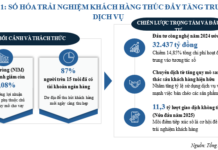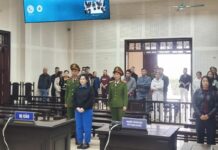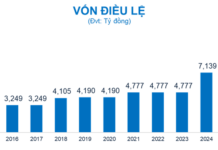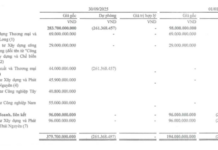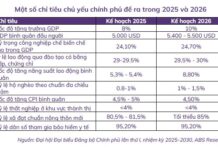Reforming the organizational structure and streamlining the apparatus are issues that have always been of concern to the Party and the State, and have been implemented multiple times with significant results. However, compared to the set goals, the achievements fall short. The political system’s structure remains generally cumbersome, with multiple layers and entry points.
“There were times when we aimed for a streamlined apparatus, but it ended up expanding, and our goal of reducing personnel resulted in an increased headcount, leading to high regular expenditures, hindering salary reforms, and limiting investment in development,” said Mr. Ha.
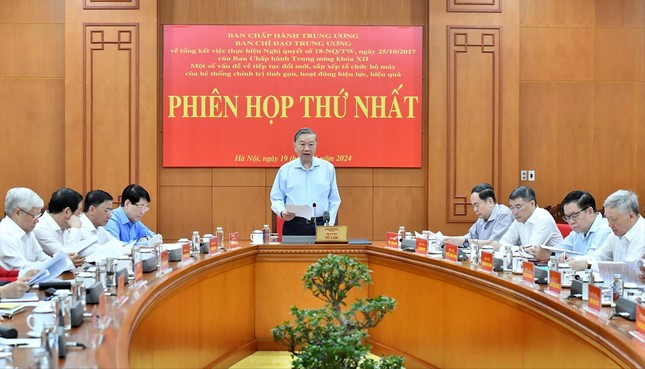
General Secretary To Lam chairs the first meeting of the Central Steering Committee for Continuing the Reform and Arrangement of the Political System’s Organizational Structure. Photo: Dang Khoa.
In 2017, the Central Committee issued Resolution 18 on continuing the reform and arrangement of the political system’s organizational structure to make it more streamlined and effective. After seven years of implementation, initial positive results have been achieved, contributing to reducing intermediary layers, the number of general departments, personnel, and regular expenditures, thus providing additional funds for investment in development.
The reorganization of district- and commune-level administrative units has also yielded significant outcomes. “The implementation of Resolution 18 has provided valuable lessons and experiences for the Party and the State to continue the revolution in organizational structure effectively and substantially in the coming time,” emphasized Mr. Ha.
Ripe Moment
– One of the important contents of Resolution 18 is to study and clarify the theoretical and practical basis for the scope of multi-sectoral and multi-field management and to propose appropriate solutions and implement the reorganization and streamlining of organizations and entry points. Why hasn’t this been achieved, sir?
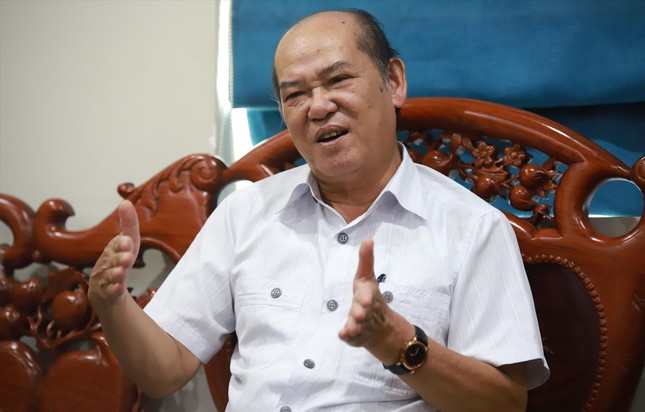
Mr. Nguyen Duc Ha – former head of the Party Affairs Department, Central Organization Committee.
Resolution 18 does address the issue of studying and clarifying the theoretical and practical basis for the scope of multi-sectoral and multi-field management of some ministries and sectors, especially those with similar functions and tasks, to propose appropriate solutions and implement the reorganization and streamlining of organizations and entry points in the next term, such as the transportation and construction sectors, finance and investment planning, and ethnic and religious affairs… However, reorganizing the apparatus is a very difficult and complex task that needs to be done step by step, firmly, and with a roadmap, without haste or perfectionism.
In the past period, we focused on streamlining internal entry points within ministries, sectors, and People’s Committees at all levels and then proceeded to merge districts and communes, so we couldn’t do everything at once. Doing so simultaneously, that is, merging internal entry points and ministries or sectors at the same time, could cause significant disruptions, so it must be carefully studied and the appropriate time must be chosen for consideration.
– So is now the right time to consider and decide, in your opinion?
I think now is a suitable time to consider. The reason is that we have been implementing Resolution 18 for seven years and have gained many valuable lessons and experiences. Especially when it comes to reorganizing the apparatus, the role of the leader is very important.
Recently, General Secretary To Lam and the leaders of the Party and State have demonstrated a strong determination to reorganize the apparatus. Notably, in the previous term, as Minister of Public Security, General Secretary To Lam carried out a revolution in streamlining the apparatus in the spirit of Resolution 18 very effectively. The Party Committee of Public Security, the leadership of the Ministry of Public Security, has set an example in reorganizing the apparatus to ensure a streamlined and effective structure, following the motto “A streamlined ministry, strong provinces, comprehensive districts, and communes that are close to the people.”
Secondly, the revolution in the organizational structure is clearly an urgent issue. If we do not implement it, we cannot remove bottlenecks and create breakthroughs for development.
Thirdly, the organization of multi-sectoral and multi-field ministries is not a new issue but has been practiced for a long time. In the past, the government structure included the Ministry of Heavy Industry, the Ministry of Light Industry, the Ministry of Electricity and Coal, and the Ministry of Trade. After several mergers, only the Ministry of Industry and Trade remains, which is very streamlined. Similarly, the Ministry of Agriculture and Rural Development was formed through the merger of the Ministries of Irrigation, Forestry, Agriculture and Food Industry, and Fisheries… So, we have sufficient theoretical and practical basis to continue reorganizing multi-sectoral and multi-field organizations.
Ministry Merger, Department Merger
– In your opinion, are areas such as transportation and construction, finance and investment planning, which Resolution 18 mentions for study, truly similar in function and task?
In my personal opinion, the Ministry of Finance and the Ministry of Planning and Investment have quite a few similarities in terms of investment and budget management. Currently, the Ministry of Finance is responsible for budget management, while the Ministry of Planning and Investment is in charge of formulating public investment plans. If merged, it will ensure that the formulation of socio-economic development plans and investment plans is closely linked to the ability to balance financial and budgetary resources.
Similarly, the Ministry of Transport and the Ministry of Construction also have many similarities. If they remain separate, the apparatus will continue to have multiple entry points and be cumbersome, wasting time and resources.
However, for the merger to take place, it is necessary to carefully study and assess the impact, consider the development perspective, and evaluate: If we continue to maintain the ministries as they are, what will the situation be like in the future? If they are merged, what are the benefits and limitations?
Looking at it from a common sense perspective of efficiency, perhaps anyone can see that when two ministries are merged into one, we mechanically reduce one ministry. However, the more valuable reduction is in the streamlining of administrative procedures. This is also what the people and businesses are expecting, and it needs to be studied.
Additionally, when ministries and sectors are merged at the central level, the corresponding departments at the local level will also be merged. As a result, we can reduce up to 63 departments, which means reducing up to 63 department directors.
“When we talk about a ‘revolution in streamlining the organizational structure,’ it means that we will act more decisively, vigorously, comprehensively, harmoniously, and with higher political determination to achieve better results.”
Mr. Nguyen Duc Ha,
former head of the Party Affairs Department, Central Organization Committee
A Revolution of Special Significance
– We often talk about renewing, reforming, or rearranging the organizational structure, but in his recent writings and speeches, General Secretary To Lam has emphasized the need for a “revolution in streamlining the organizational structure.” What does this mean, sir?
It is true that when it comes to the organizational structure, we have only talked about renewal, reform, or rearrangement so far. However, this time, General Secretary To Lam has defined it as a “revolution in streamlining the organizational structure.” In my opinion, when we talk about a “revolution in streamlining the organizational structure,” it means that we will act more decisively, vigorously, comprehensively, harmoniously, and with higher political determination to achieve better results.
Moreover, calling it a “revolution” also implies the acceptance of “sacrifice” and the willingness to endure disadvantages for the organization and each official and party member. Before the merger, you were a leader. After the merger, you may become a deputy leader, along with various thoughts and concerns, not to mention rights and interests. However, for the country’s development and the common good, I believe that at this point, each official, party member, civil servant, and employee should put the interests of the country and the people above personal interests.
– Thank you, sir!






